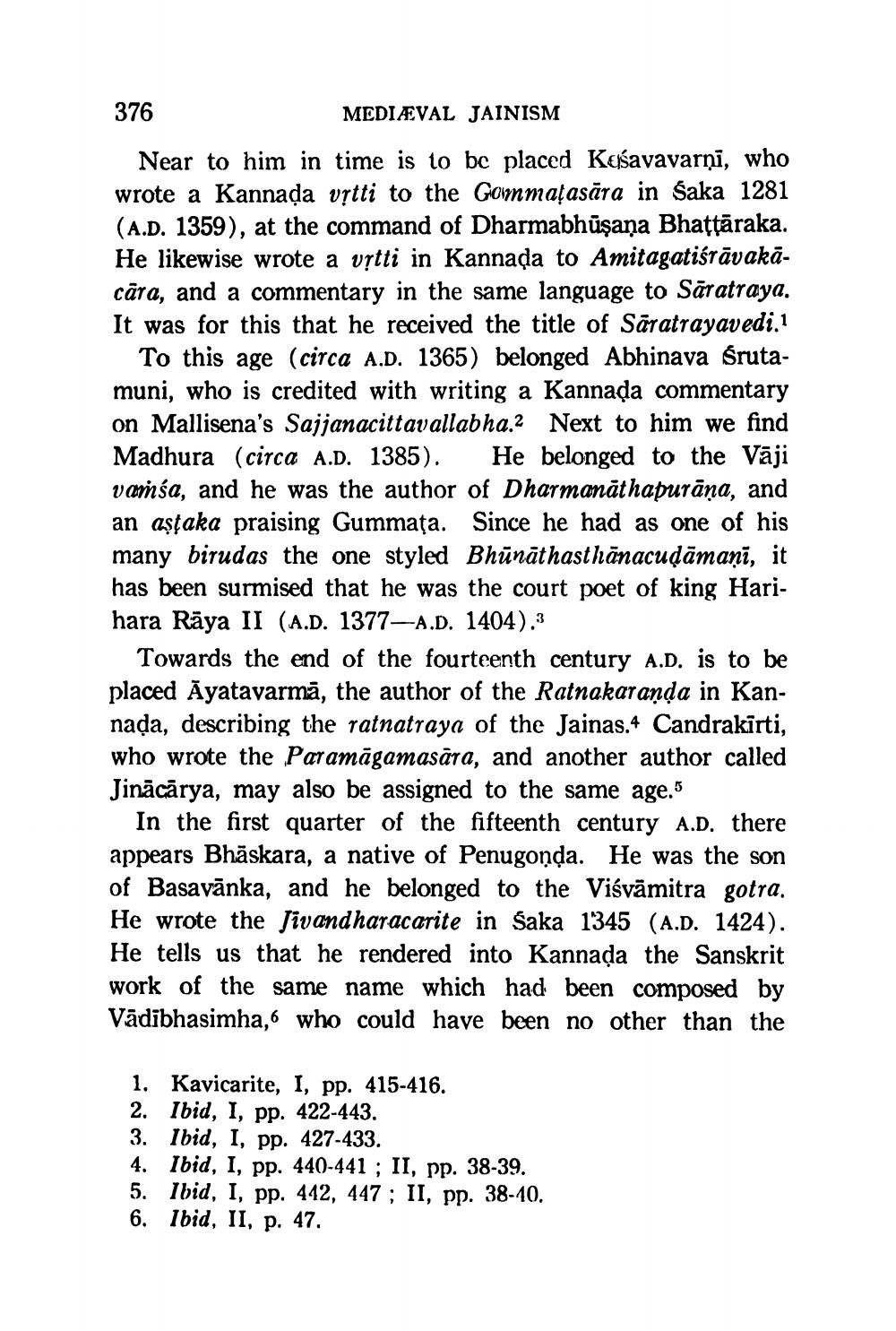________________
376
MEDIEVAL JAINISM
Near to him in time is to be placed Keśavavarṇī, who wrote a Kannada vṛtti to the Gommaṭasara in Saka 1281 (A.D. 1359), at the command of Dharmabhūṣaṇa Bhaṭṭāraka. He likewise wrote a vṛtti in Kannada to Amitagatiśrāvakācāra, and a commentary in the same language to Saratraya. It was for this that he received the title of Saratrayavedi.1
To this age (circa A.D. 1365) belonged Abhinava Śrutamuni, who is credited with writing a Kannada commentary on Mallisena's Sajjanacittavallabha.2 Next to him we find Madhura (circa A.D. 1385). He belonged to the Vāji vamsa, and he was the author of Dharmanathapurāṇa, and an aşṭaka praising Gummata. Since he had as one of his many birudas the one styled Bhunathasthanacuḍāmaṇī, it has been surmised that he was the court poet of king Harihara Raya II (A.D. 1377-A.D. 1404).3
Towards the end of the fourteenth century A.D. is to be placed Ayatavarmā, the author of the Ratnakaranda in Kannada, describing the ratnatraya of the Jainas.4 Candrakirti, who wrote the Paramāgamasara, and another author called Jinācārya, may also be assigned to the same age.5
In the first quarter of the fifteenth century A.D. there appears Bhaskara, a native of Penugonda. He was the son of Basavānka, and he belonged to the Viśvamitra gotra. He wrote the Jivandharacarite in Saka 1345 (A.D. 1424). He tells us that he rendered into Kannada the Sanskrit work of the same name which had been composed by Vādībhasimha, who could have been no other than the
1. Kavicarite, I, pp. 415-416.
2. Ibid, I, pp. 422-443.
3. Ibid, I, pp. 427-433.
4. Ibid, I, pp. 440-441; II, pp. 38-39.
5. Ibid, I, pp. 442, 447; II, pp. 38-40. 6. Ibid, II, p. 47.




